We’ve had the most fabulous mid-winter weather over the weekend here on Norfolk Island. With a full moon on 24 June, we experienced some wonderful low, low tides. Peak low tides always lag the full moon (and new moon) by a day or so. This time it left Emily Bay looking like someone had pulled out the plug!
But let’s get onto what has caught my eye over the last week. (By the way, you can click on any image and a larger version will pop up.)
We have a couple snubnose darts, Trachinotus blochii, who are regular visitors to Emily and Slaughter Bays. I saw them in Emily on 16 June. Then, on 22 June, I hopped in at Slaughter Bay and saw them again, but this time they were accompanied by the biggest daddy of them all. The water was a little murky, but I did manage to capture a couple of shots (in the slide show at the bottom of this page). I guess that bodes well for some bubba snubnoses then!
Genus Goniobranchus
Another great find (and a new one for me) this week was a small nudibranch hiding out under a rock shelf in Emily. I popped an image of it up in iNaturalist (do check this website out if you are interested in citizen science and wildlife, generally) and someone IDd it for me as being from the genus Goniobranchus.
A rather pretty group of goatfish have been chilling in the shallows of Emily for a couple of months. We have a few different types of goatfish here, but I’d not seen these ones before. You can see the other goatfish species under that heading on the Reef Fish page of this site. I finally managed to get some decent images of these, too, and an ID. It turns out they are Francis' goatfish - Upeneus francisi. Common to all goatfish, these guys have barbels – a pair of whiskery ‘feelers’ (or a goatee, hence their name) – protruding from their chins. These are studded with taste buds and are used to probe the sand in order to detect their prey.
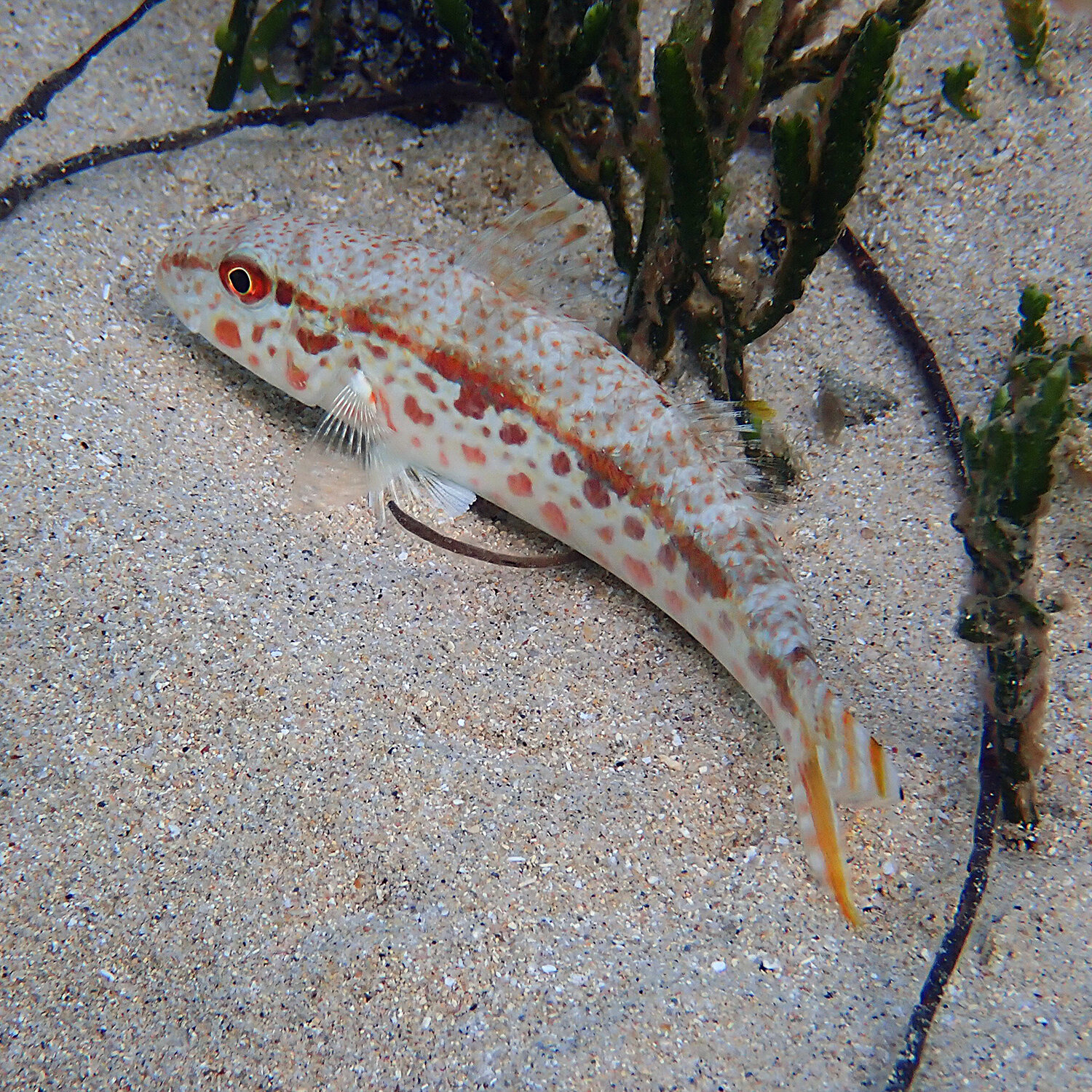


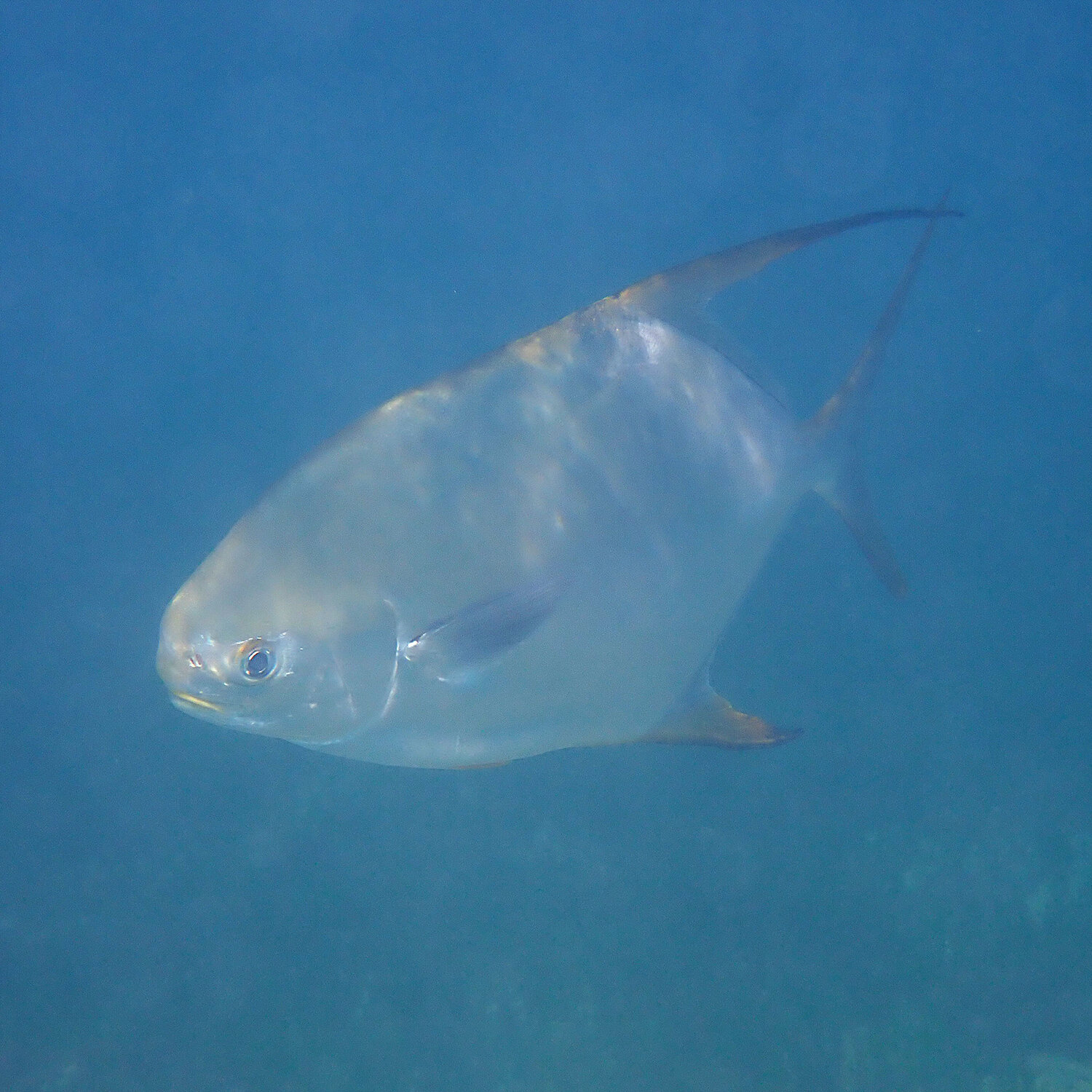

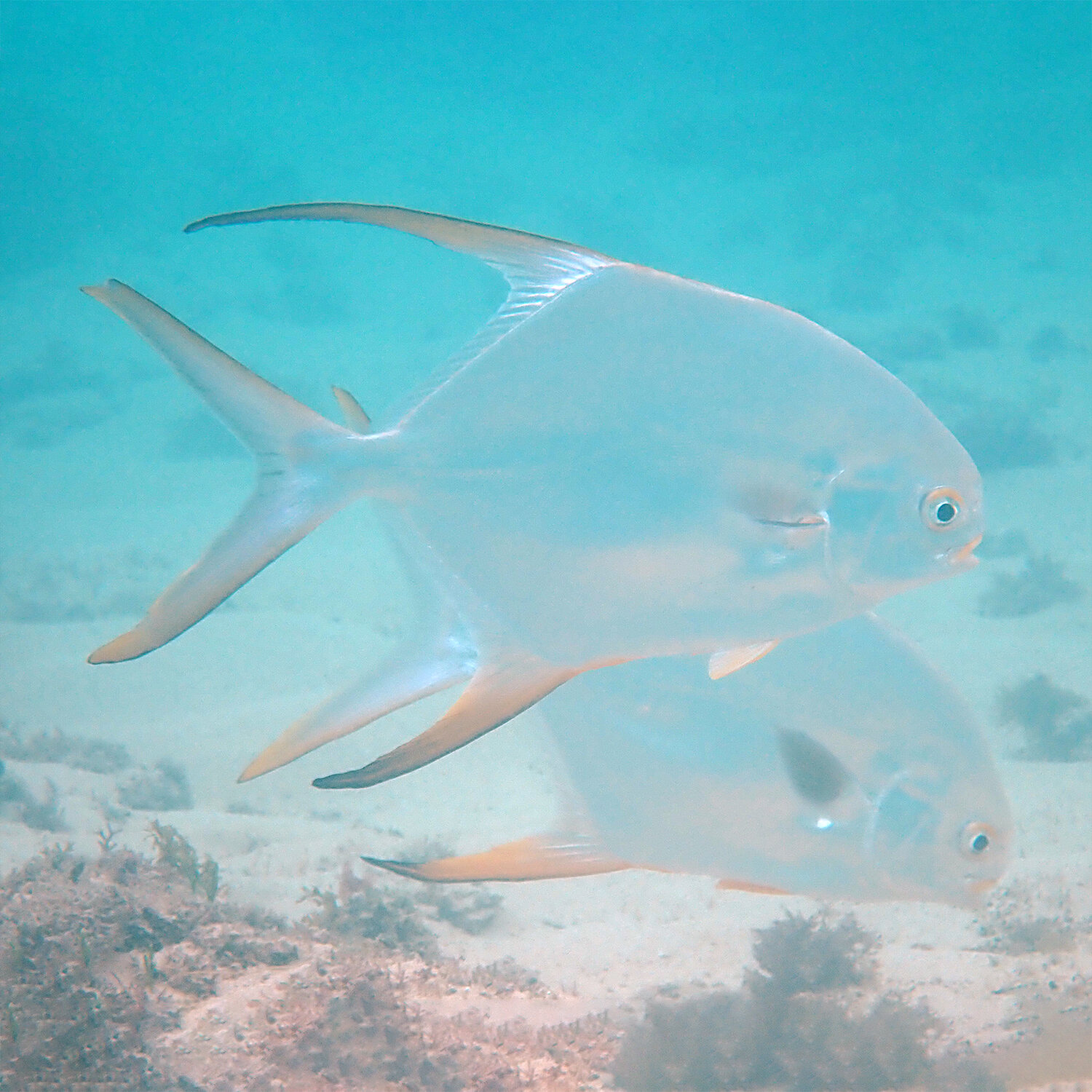
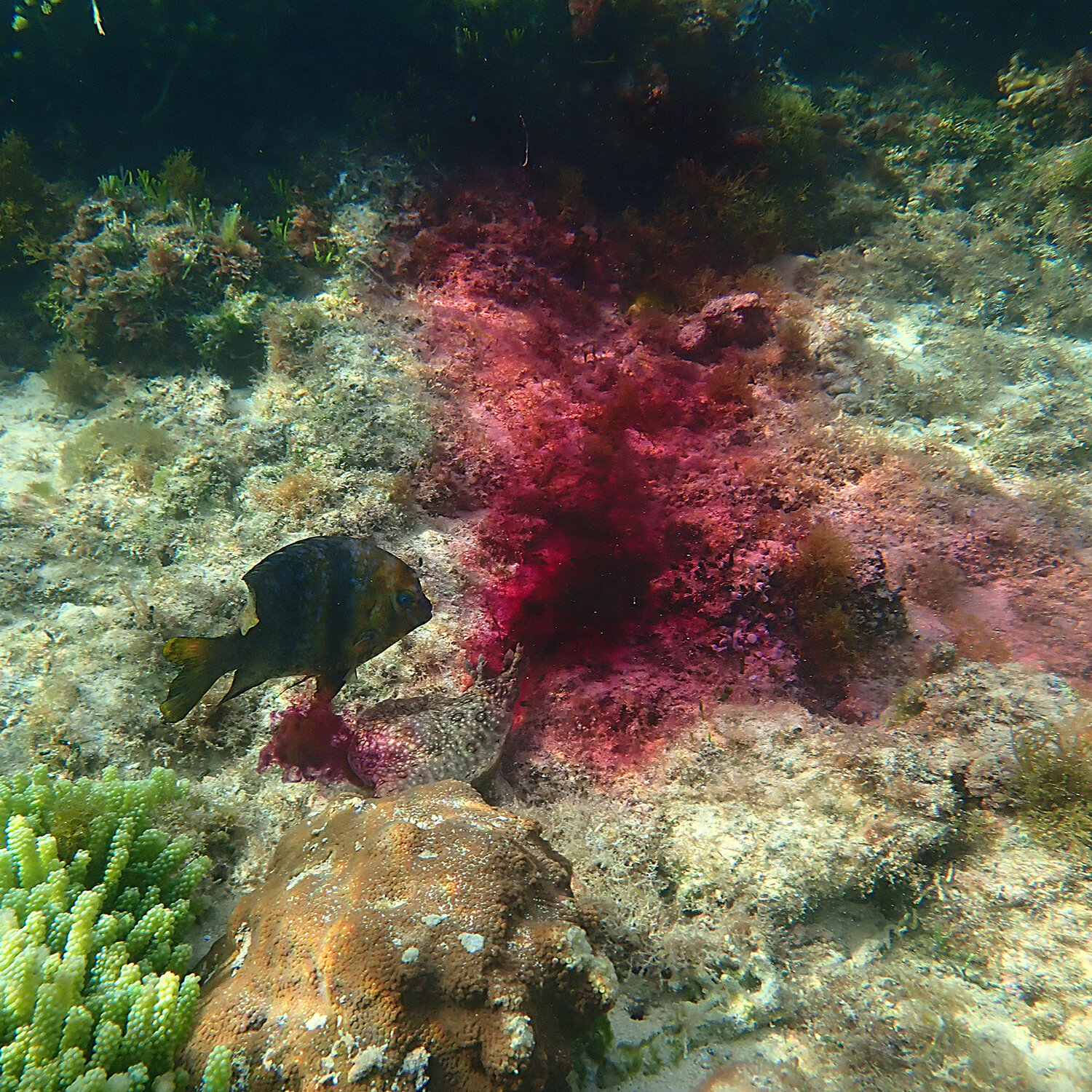
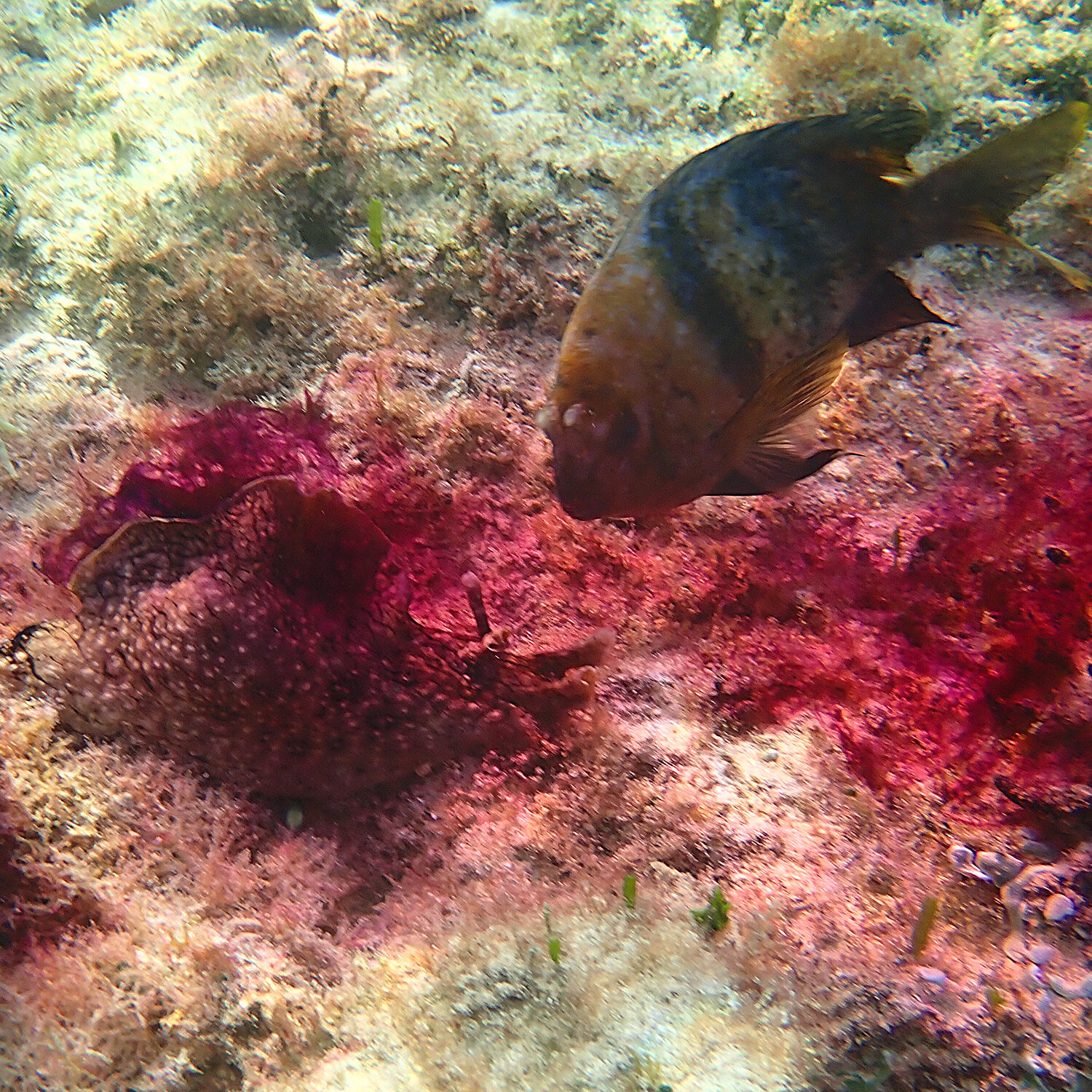
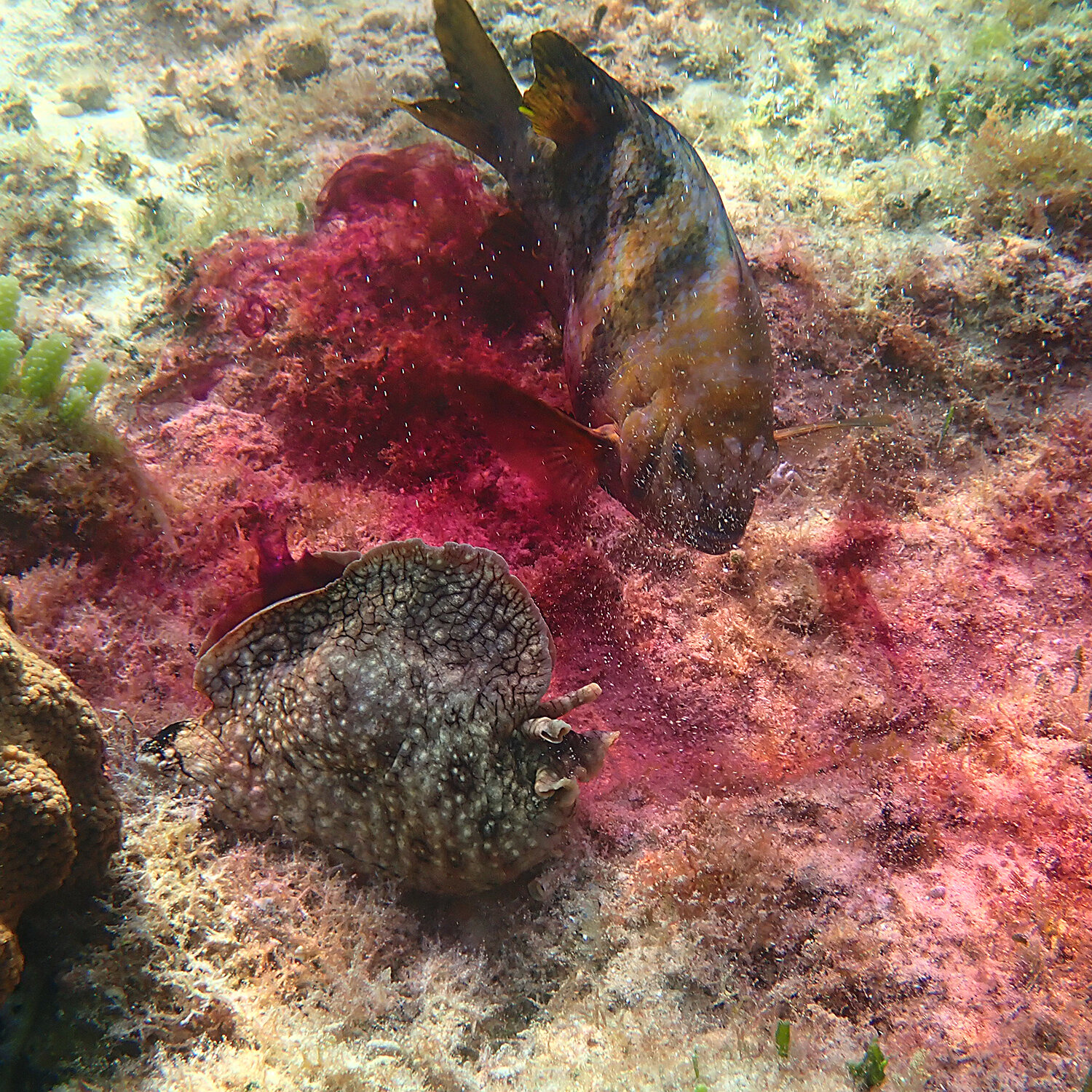
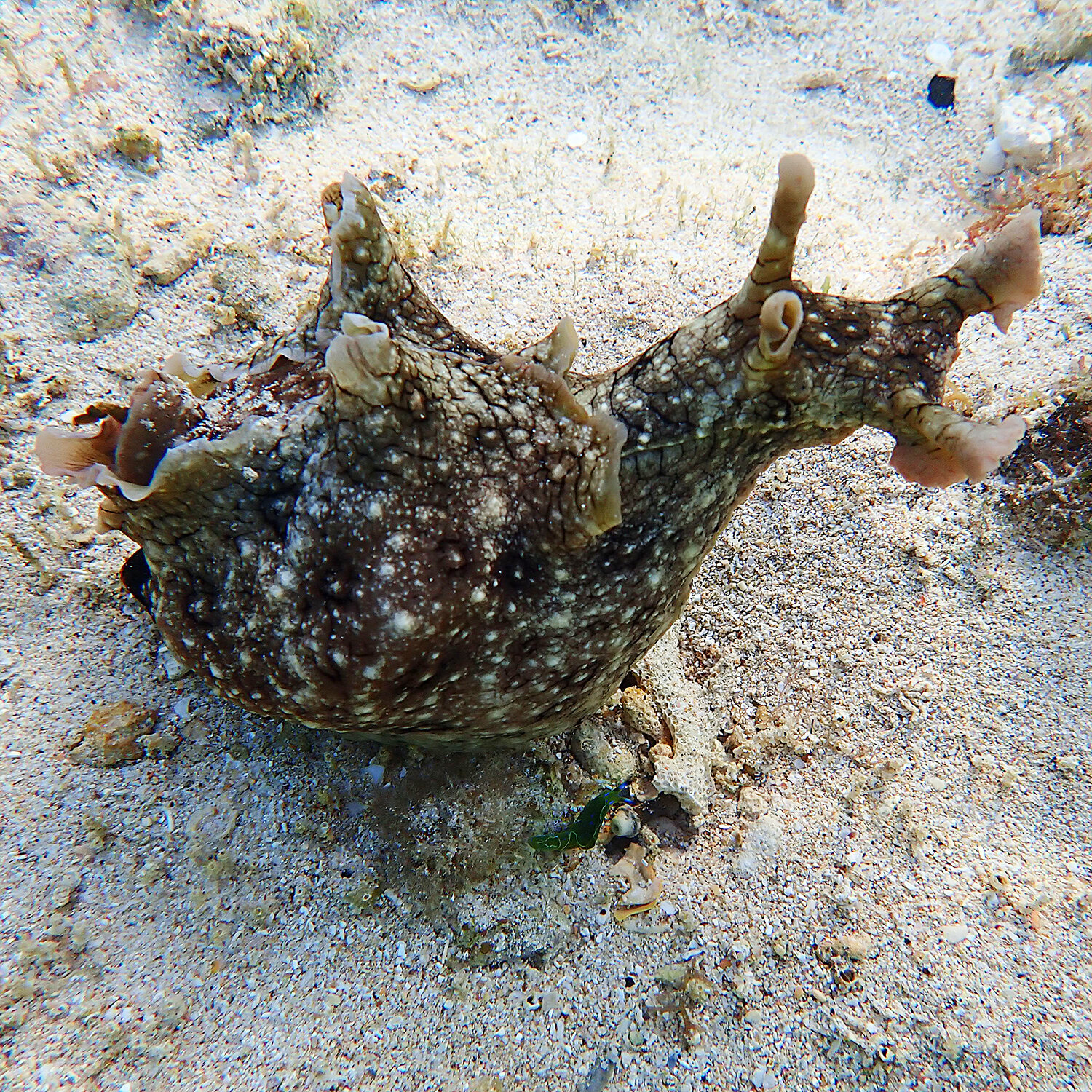
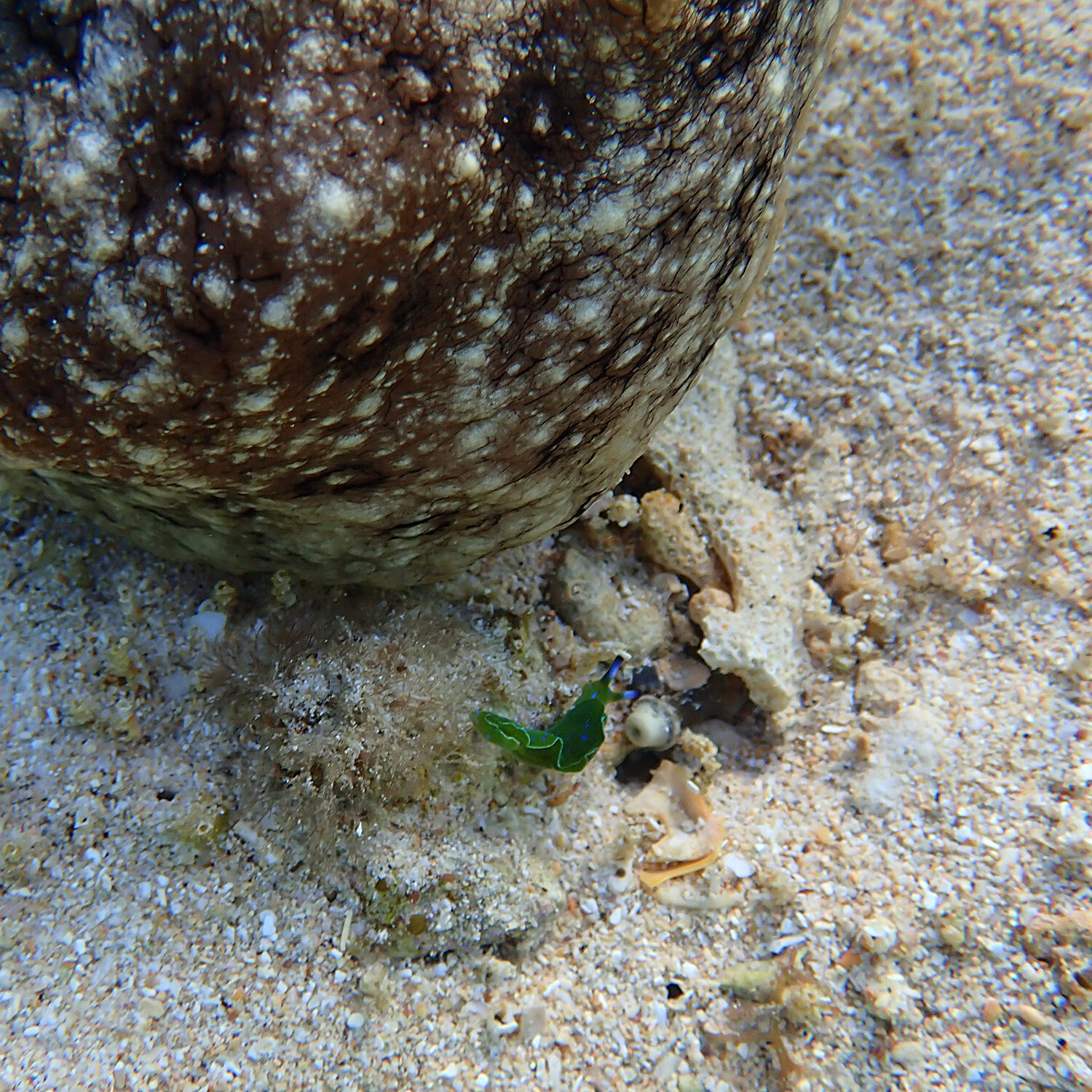
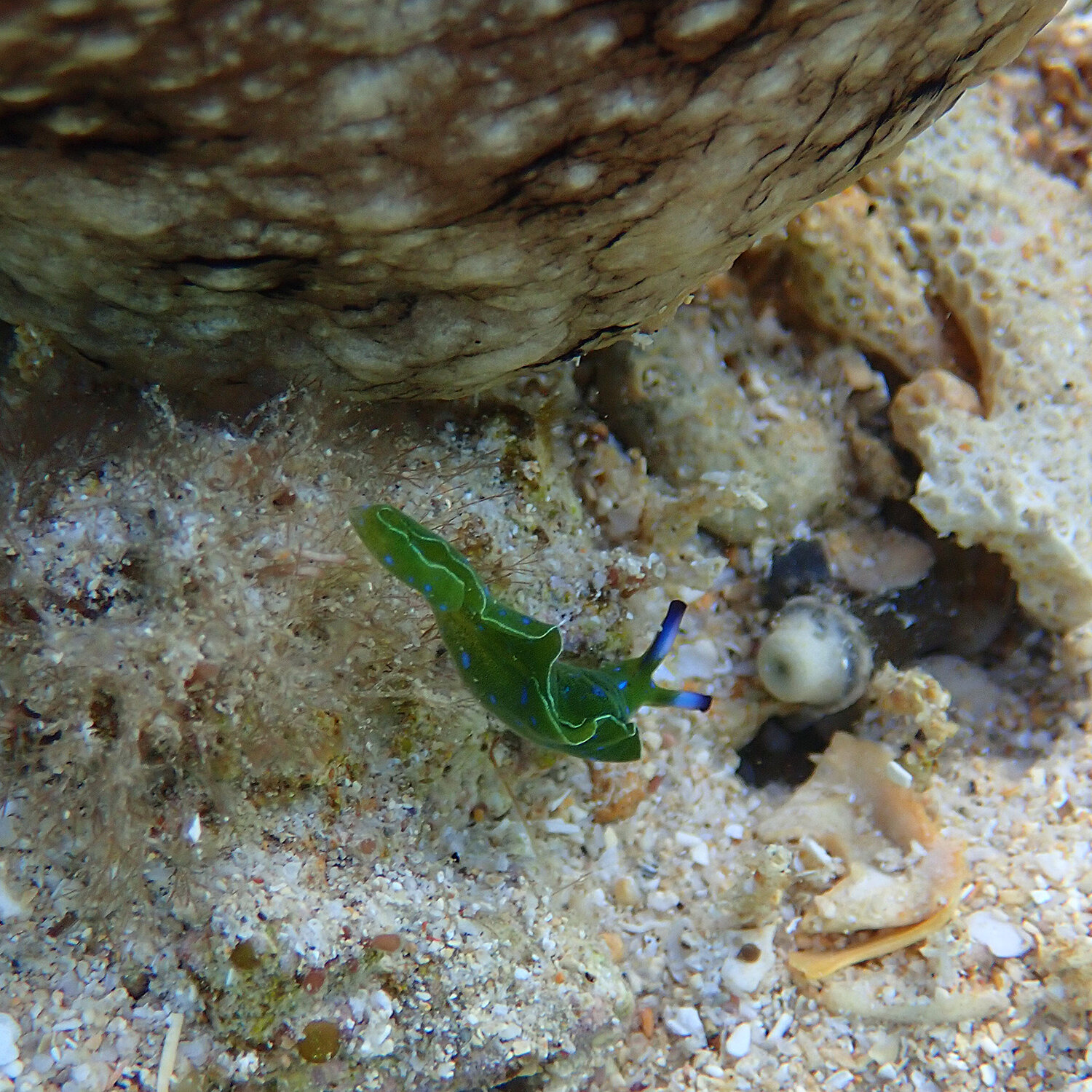
The final noteworthy observations this week are of sea hares. They’ve been in hiding for a month or two, tucked under rocks in ones and twos. But this week there seemed to be more of them out and about; some were grazing, but I saw quite a few with their heads up as if sniffing or tasting the seawater (images in the slifeshow, above). I chanced upon one being attacked by an aatuti (commonly known as a banded scalyfin, Parma polylepis). The sea hare squirted ink repeatedly, which definitely confused the aatuti. This vivid purply-red dye is toxic and used to deter predators. And I think it worked! See the images in the slideshow, above.
Another sea hare, a white-speckled one, Aplysia argus, was hanging out with a teeny tiny blue-spotted elysia, Plakobranchidae, a miniature cousin. These two are the original ‘Odd Couple’! You can see these two in the slideshow (above). To give you some idea of the scale of things, I could fit the sea hare into the palm of my hand.
And to finish, I have a lovely image of another sea hare – an underwater Shrek – image below!
Isn’t nature grand?
White-speckled sea hare - Aplysia argus
